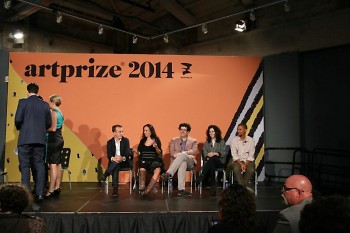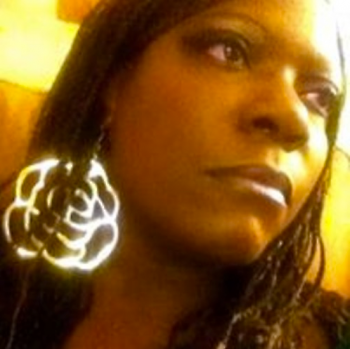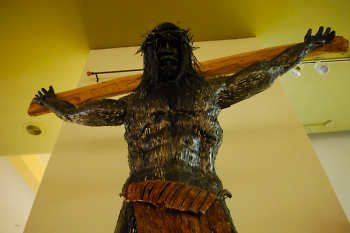We talk about activities as if some of them take time and others don’t, yet we know that we experience everything as having a duration, whether we savor and put it to memory or not. Whether we are dreaming and time is of a different form, daydreaming, underwater, in dense fog- we mostly agree that time is an ongoing life factor.
When we are talking about “time-based art” it is a way to talk about and emphasize that a human being has done something wherein “time” is nearly the material shaped. A sensory material is wrapped and formed around time. And as we apply our attention to it, to some degree we consume or “take [time]” that shape.
Our attention is formed, in time, alongside the work and we can get to know it.
Music, dance, theater, audio, film, video and perhaps the antecedent of all of these: spoken language and storytelling- these are all conventionally and broadly understood modes of “sculpting time” -as the Russian filmmaker Andrei Tarkovsky so nicely put it.
Yet no answer is clean and problems with this definition begin right away. For example, you are reading these words and it takes time, and I am writing in layers of time (scraps, editing, overlays) but essays, poetry and novels - we’ve decided these are not time-based arts - though most scholars of Emily Dickinson (and I alongside them) would disagree. But poetry presented as audio could be easily argued for.
"Reading" a painting is also temporal, the eye moves and painters account for this compositionally. But as with vegetarians eating probiotic microorganisms, perception of coherent significance is a question of scale.
So perhaps more relavent is to ask where on the interdisciplinary spectrum is a work: deep into time or dabblingly mixed up in it? If a work results in a forest after 50 years is the artwork the forest, the growing, the people, all of them? As art has been and continues to flow between materials, media, mediums, strategies and concepts of done/undone/in-process/etc this multivariate spectral analysis is pressing.
There is a conjoined issue in contemporary art, which is where in the process of a work being made, displayed or presented is “the art” to be found. This is one of better questions to ask of an artist these days- at what stage of the lifecycle does the artwork begin and end -because we have expanded these boundaries to include, literally, anything that someone within an art production system (artist, curator, museum, gallery contest and etc.) is willing to “publish” as art. And by art here I include music, dance, film, crafts . . . anything artish.
At this point in time a watercolor landscape is equally difficult to claim as art for some as a fork collected from your dinner plate. Art and experimentalism are moving targets, relative to experiences we have had.
At ArtPrize this year the categorical distinctions were broadened to include Installation and at the juror shortlist event we were confronted with some particular definitions which are not universal, nor adopted by ArtPrize as fact, nor communicated to participants before registering. These distinctions cease to be academic when they are the basis for a contest with rules, a judiciary branch, entry fees and prize monies.
The perspectives of the individual jurors, curators and one blogger, are theirs and it was this criteria, self-devised, that drove their selections, not a mutually agreed-to set of criteria, as in a fancy cat or dog show, where each breed has scalable attributes (great example of perky Devon Rex ears, but odd too-rumpled body!).
One particularly clear example was the Installation juror's definition of Installation which claimed that site-relatedness, specifically work that engaged its (architectural) history defines the term. I am sure she is aware that art historically this is inaccurate, that installation comes out of a variety of practices that more or less emerge from the notion of creating an environment or situation rather than objects or representations. Many entrants in this category were not making installations by her definition and could have been relocated to other categories in advance of her visit.
The lack of mutually agreed to criteria erodes the claim of ArtPrize to afford an exchange between experts and the general public whose expertise lie in many other fields and could and do discuss what is experienced in a serious way. Without such criteria the jurors will continue to arrive as aliens, dismissing much of what is important HERE and disqualifying much of the work on ideological grounds or via an idiosyncratic read of art history.
As another facet of this problem, while I am not religious, it is clear that devotional art and iconographic work should be dealt with in a serious way by a juror at ArtPrize because such a large part of the population are devout and interested in explicitly religious work.
I’ll focus now on Time-Based, as that is my area of interest both as a curator/writer and also as an artist.
At this point I should mention that this year I was commissioned in collaboration with the composer Adam Schoenberg by the UICA and the Grand Rapids Symphony. While our piece "MusicX" was not selected, we have been amazed by how many people experienced the work. It is one of the most positive art experiences I have had, hands down. So I write as a thinker/curator hoping to contribute what I can to ArtPrize, not as a disgruntled entrant. Of course it would have been lovely to WIN, but we were invited and came to share our crazy idea MusicX with the ArtPrize community and we did.
The Time-Based category needs a reboot.
The first issue with the Time-Based category could be seen from a distance: over half the entries were audio representations of music: a song, a CD. While they might perform live, the song was entered not the stage show or video associated. These artists were then invited to busk around town, I suppose in an attempt to see if any particular act would take off. But this didn’t seem to happen, and not a single audio work made it into the top five.
The musicians who entered ArtPrize should have been warned that in the context of contemporary art, their blues band or acoustic ballad would not have a chance with a juror tasked with the Time-Based category. I would, in fact, encourage ArtPrize to at this point return their entry fees as it seems a significant misstep that takes advantage of a population's lack of coded assumptions. On his first day, the 2014 juror was tweeting that 80% of the ~150 time-base entries were not seriously being considered. I doubt he was told to take the blues band seriously as Time-Based Art, but he should have if the entries were permitted, right?
If ArtPrize wants to run a mini American Idol alongside Artprize, it should! But it requires a different approach, criteria and expertise. If not, it should be explained up front. If we want to have a frank conversation about art we need to first agree we are talking about apples, not extension cords.
Let's look at the Time-Based winners in terms of their Time-Basedness:
"Capitalism Works for Me" is an interactive sculpture that involves voting. If it is Time-Based art work, the ArtPrize App would similarly be a work of Time-Based Art. The “time” is in the unfolding of an artwork that has multiple stages, not a work that has anything to do with shaping attention in time which is a difference. This work should have been in 3D or else all sculptures with any participatory element should have been recategorized as Time-Based. Further the work doesn't count higher than 999, flipping back to zero, thus undoing the voting and temporal trace of your vote. This work is quite hard to argue as Time-Based without recategorizing any conceptual work that unfolds over days, weeks, years, regardless of form.
Mel Chin’s "Operation Paydirt'/Fundred Dollar Bill Project" is similar. It is only time-based inasmuch as it has many stages to the work if the artwork is viewed as a process. But if this is a criteria for Time-Based, then "In Light of Failure" aka "LOST SHIRT" at the UICA, alongside all other works that involve public participation, erosion or graffiti or a final act (delivering the fundreds to Congress in Chin’s case or giving away all of the lamps in the case of Lost Shirt) would be Time-Based. This is confusingly vague and too broad.
To explain further, if we go with this criteria one of the most favored works in the competition, "Great Wall of Bees: Intelligence of the Beehive," which is a presentation of prints eaten by an artist’s bees, displayed with the hive of bees live in the museum would also be Time-Based because the bees took time to eat the prints and continue to eat them during the show. If not Time-Based, then it would make sense for it to be Installation, as it is a series of 2D works (prints) presented with their living co-authors (bees). That is unless we want to understand prints as 3D (which, technically they are but art historically are not) and the bees as 3D, which they aren’t because they are living, in motion, and are at least 4D. In conversation with Ladislov as he was installing it seemed clear that he saw the prints as the artwork not the bees. Does it matter where the artist locates the work? 2D in a 4D display, no?
"Life Copy," another winner, is time-based if we find the most prominent structuring of attention in the piece to be the video the artist produced and showed the corner of the room. I think this is a fair reading but is arguably more symbolic as evidence of media presence than communication via moving image, editing, etc. Installation?
The two works that are definitively and conventionally understood as temporal: "ArtPrize! The Musical," a satirical work of community-based music theater and "respirador (breather)," a site-specific dance. Performance within a perceivable scale seems cut/dry.
So: Two are misguidedly categorized as Time-Based and one is borderline.To recap here’s why: none of them are primarily involved with shaping attention in time, they are simply works that involve a process, are interactive, or contain a time-based material, used as a a-temporal symbol as part of an installation. On our interdisciplinary spectra they dont fall strongly in time-based perception. Furthermore, the rationale publically given for all three had nothing to do with how they used time but rather the sociopolitical message interpreted (each work chosen has a nearly forced reading, another dimension to consider), atemporally communicated.
What was communicated to the public was "I like this stuff" and not an argument for their temporal ingenuity or sophistication. This would be a starting point for conversations that go beyond the knee jerk reaction of like vs. dislike that Artprize is encouraging.
Let's do that. Grand Rapids is a super interesting place full of paradox and open-mindedness; there is no reason ArtPrize can't become the post-biennial model for large scale art festivals that promote learning and discourse above all else.
But! What ArtPrize will need to do if they want this serious debate is to define mutual terms that represent a consensus amongst experts and a caring public, and not leave it to a single judge to define and enforce each year. The best judges work wisely with complex, transparent criteria. Otherwise we are dealing with tastes, fears, ignorances, a kind of kangaroo court discourse subject to profiling and quick reads, just the opposite of learning.
ArtPrize gets better every year; I hope the invention of an interdisciplinary spectrometer is unveiled for ArtPrize registration in 2015.
Micah Silver is an artist, writer, and curator in and around music and time-based art. For ten years he worked as a curator in New York at Diapason Gallery for Sound and then as a member of the founding curatorial team at the Experimental Media and Performing Arts Center at Rensselaer in Troy NY. His forthcoming book theorizing audio, Figures in Air will be released in December 2014 by Inventory Press. Information on his work can be found at nophones.org.


